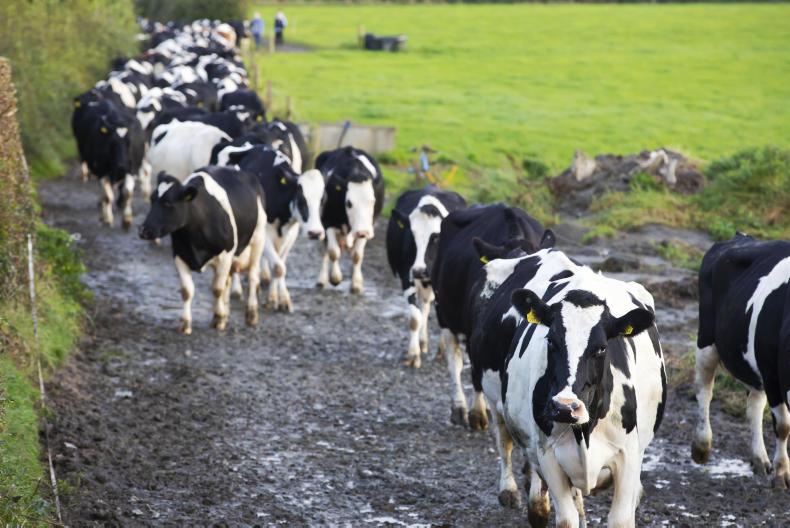Dry cow tubes
Most co-ops now offer a milk culture and sensitivity testing service to suppliers. The purpose is to assist farmers in choosing a dry cow tube that will be effective at treating the bugs that cause mastitis in herds. It’s part of the strategy aimed at reducing antibiotic usage.
The first step is to only use antibiotic dry cow tubes on cows that need it (high SCC) and to use the right type of antibiotic on cows that do need it.
Reducing antibiotic usage makes sense from a cost and health point of view, though there are risks involved. Firstly, you need to know the cows that don’t need antibiotics. Milk recording in the 30 days before dry-off will tell you this. Secondly, you need to carry out teat sealing in a very hygienic fashion. Fnally, cubicle beds should be kept clean and disinfected daily to reduce bacteria around the teat area.
Once a day milking
In last weeks’ notes, it was suggested that thin cows should receive a longer dry period. Since then, I’ve spoken to a number of farmers who put thin cows on once a day milking earlier in late lactation, rather than giving them a longer dry period. When cows go to once a day milking (OAD), milk production drops by about 20%. However, over the course of the lactation the farmers I spoke to haven’t seen as much of a drop in production as the cows are milking for longer.
For example, rather than drying off thin cows in late October, they are put on OAD milking in early September and milked on until late November. While their production drops in September and October, the extra milk produced in November offsets the loss. Also, cows on OAD can gain enough body condition score to be at target for drying off and calving. However, unlike in spring when OAD cows can be kept with the main bunch, it’s better to milk OAD cows separately in the autumn. This is because walks are longer and roadways are wetter.
Yes, it’s more work in the morning having to fetch two herds, but milking times in the evening will be a lot quicker, so it balances out.
Calves
It’s good that the discussion on calves is happening now, in advance of the main body of calving next spring.
With lower beef prices, calf value could drop next spring so it’s worthwhile to assess sale and rearing options available.
Farmers are being encouraged to spread their supply of calves better, but don’t want to adjust calving date, so this means keeping calves on farms for longer to spread out the supply. Is this feasible on your farm?
Obviously there’s a cost involved and this needs to be kept in mind, but there’s a logic to what’s being suggested. Now is the time to be planning for the spring. At Dairy Day on 19 November, members of the Irish Farmers Journal team will discuss the options around housing and feeding, and talk to a dairy farmer from the UK who has implemented a plan to reduce the amount of lower value calves produced from his herd. There are plenty of low cost and labour efficient ways to rear calves.
